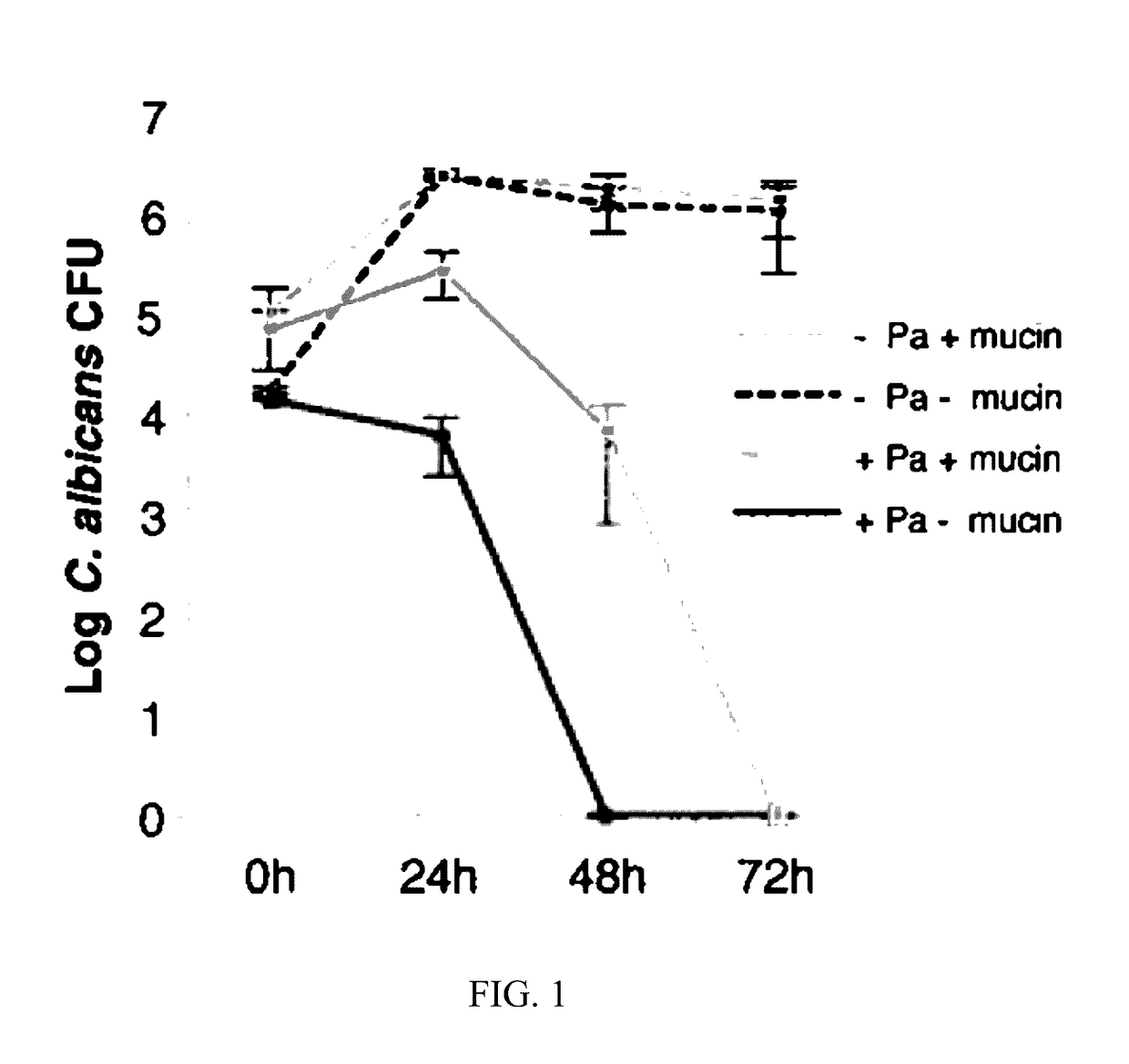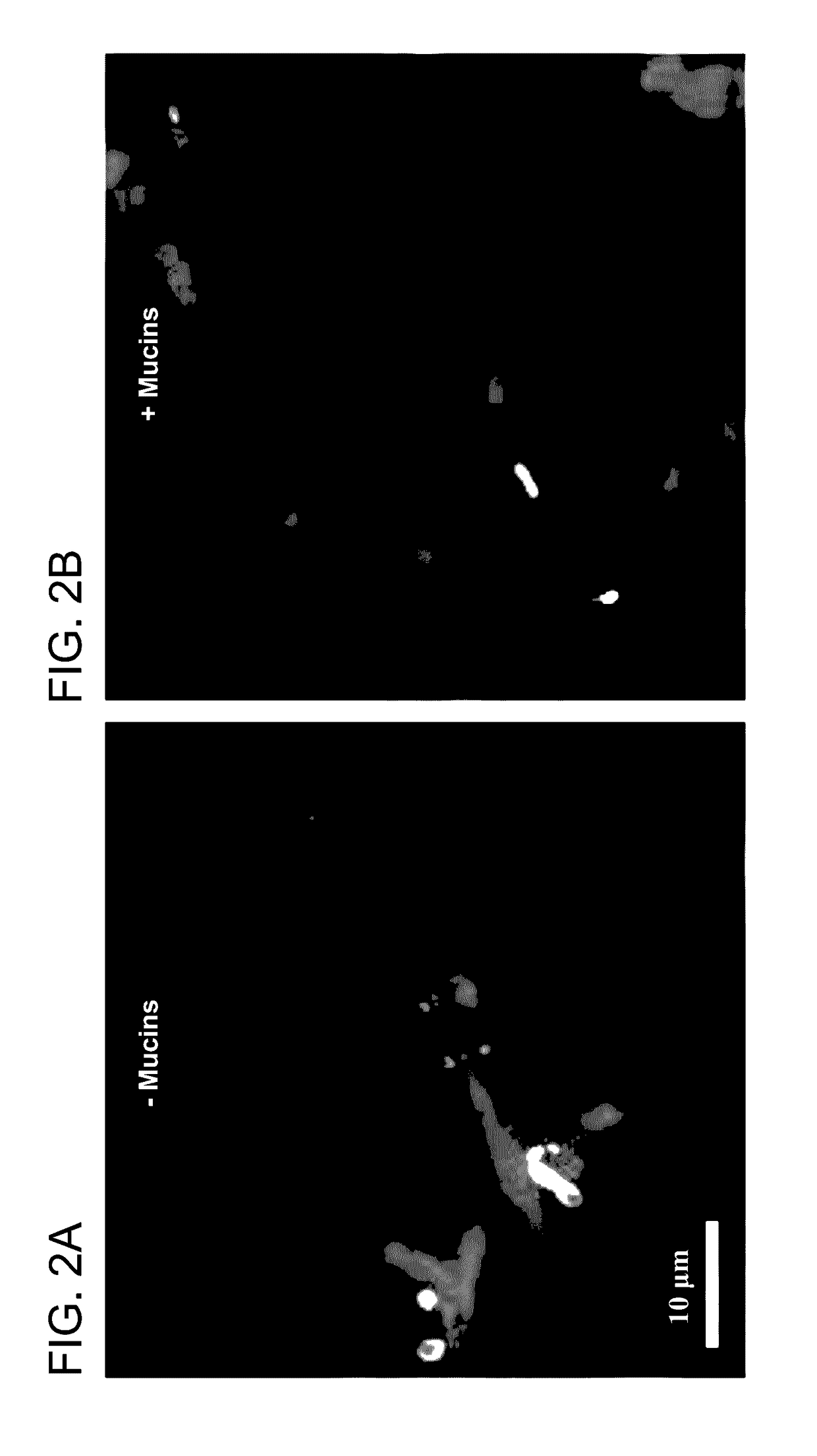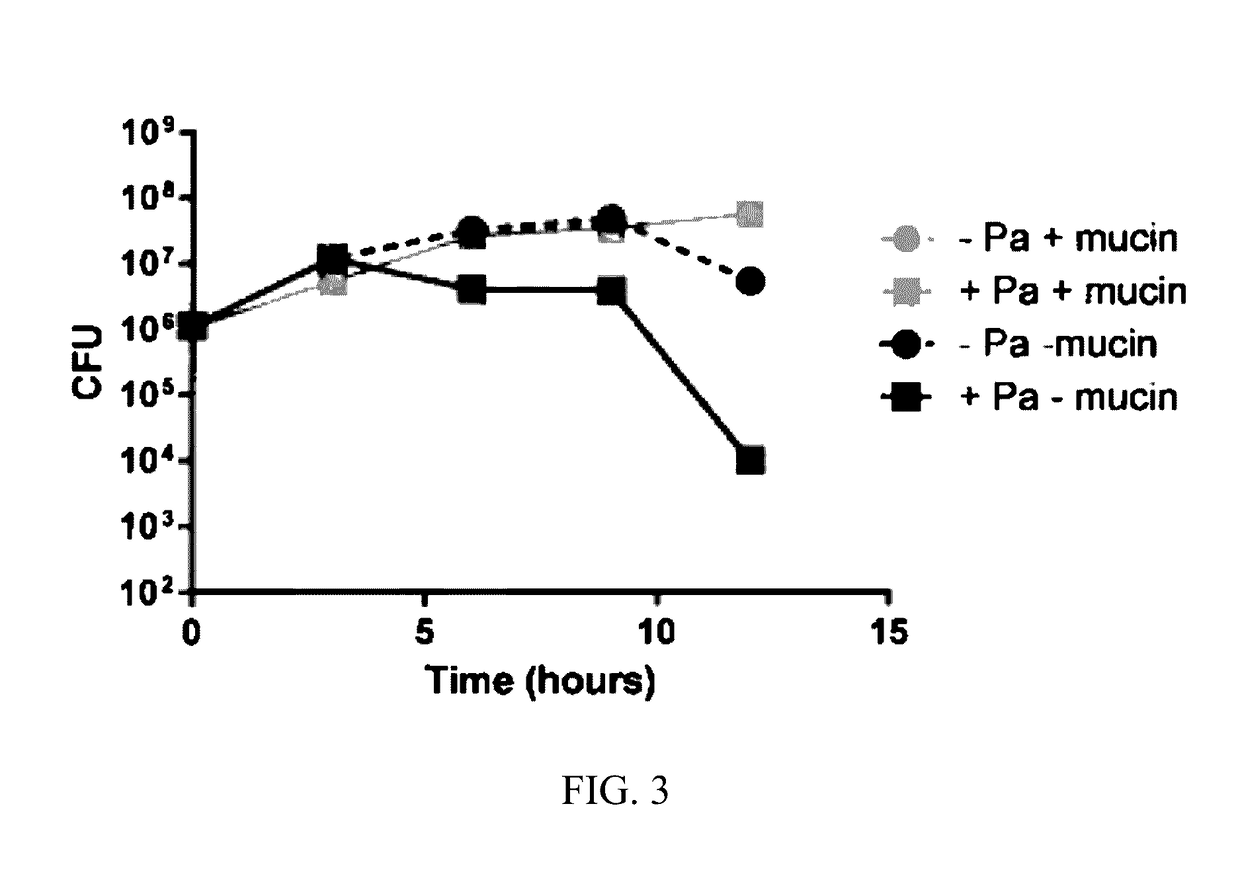Isolated mucins and different microorganisms, and methods of use
a technology of different microorganisms and mucins, which is applied in the direction of aerosol delivery, macromolecular non-active ingredients, fungi, etc., can solve the problems of affecting the homeostasis of the normal microorganism environment, altering biological activities, and affecting so as to reduce the competitive nature of microorganisms, prevent the overgrowth of certain species, and reduce the effect of microbial pathogen
- Summary
- Abstract
- Description
- Claims
- Application Information
AI Technical Summary
Benefits of technology
Problems solved by technology
Method used
Image
Examples
example 1
[0094]P. aeruginosa is often found together with C. albicans and S. aureus in the human body, in both pathogenic and commensal conditions. P. aeruginosa is a formidable microbe that can kill both C. albicans and S. aureus. In the case of C. albicans, P. aeruginosa attaches to the hyphal form of the fungus, forming biofilms that eventually kill them. P. aeruginosa kills S. aureus using an array of secreted molecules including pyocyanin, and 4-hydroxy-2-heptylquinolone N-oxide (HQNO) Importantly, many of the strategies that P. aeruginosa uses to compete against C. albicans and S. aureus are also virulent toward the human host, such as phenazine production, quorum sensing and biofilm formation. Studying the effects of mucins on P. aeruginosa antagonistic relationships toward other microbes is a simplified system that may provide insight into two important relationships: microbe-microbe and microbe-human.
[0095]P. aeruginosa was co-cultured with C. albicans or S. aureus in the presence a...
example 2
MUC5B Reduces Competition Between S. mutans and S. sanguinis
[0115]S. mutans is the primary cause of dental cavities, while S. sanguinis is associated generally with oral health. S. mutans and S. sanguinis compete for the same ecological niche, and it has been shown that their levels are inversely correlated in vivo (Corby et al., J. Clin. Microbiol. 43:5753-59 (2005); Caufield et al., Infect. Immun. 68:4018-23 (2000); Becker et al., J. Clin. Microbiol. 40:1001-09 (2002)). In reaction to stress, S. mutans secrete mutacins as defense molecules, and S. sanguinis have been shown to secrete hydrogen peroxide. Salivary mucins (MUC5B) decrease S. mutans attachment and biofilm formation. Changes in S. mutans physiology induced by MUC5B may affect how the bacterium interacts with competing species, such as S. sanguinis. Mucins may affect inter-species competition and co-existence. Salivary mucins may reduce inter-species competition by limiting bacterial virulence.
[0116]The effect of MUC5B ...
example 3
Material and Methods
Bacterial Strains and Growth Conditions
[0122]For all experiments, S. mutans (bacterial strain Streptococcus mutans UA159) and S. sanguinis (erythromycin-resistant Streptococcus sanguinis JFP36) were grown overnight in Brain Heart Infusion (BHI) medium (Becton, Dickinson and Company). Before inoculating an experiment the cells were pelleted, washed with half-strength BHI containing 1% (wt / vol) sucrose (Sigma-Aldrich Company), then resuspended in half-strength BHI containing 1% sucrose. Acid-washed glass beads (425-600 μm, Sigma-Aldrich Company) were added to the resuspended bacteria to break up bacterial aggregates then the culture was vortexed for ten pulses of two seconds each. To determine the effect of methylcellulose and MUC5B, bacteria were resuspended in BHI with 1% sucrose and either 0.4% MUC5B or 0.4% (wt / vol) methylcellulose (Sigma-Aldrich Company) before inoculating them into an experiment. All experiments were performed in chambered glass slides at 37°...
PUM
| Property | Measurement | Unit |
|---|---|---|
| viscous | aaaaa | aaaaa |
| surface adhesion | aaaaa | aaaaa |
| compositions | aaaaa | aaaaa |
Abstract
Description
Claims
Application Information
 Login to View More
Login to View More - R&D
- Intellectual Property
- Life Sciences
- Materials
- Tech Scout
- Unparalleled Data Quality
- Higher Quality Content
- 60% Fewer Hallucinations
Browse by: Latest US Patents, China's latest patents, Technical Efficacy Thesaurus, Application Domain, Technology Topic, Popular Technical Reports.
© 2025 PatSnap. All rights reserved.Legal|Privacy policy|Modern Slavery Act Transparency Statement|Sitemap|About US| Contact US: help@patsnap.com



